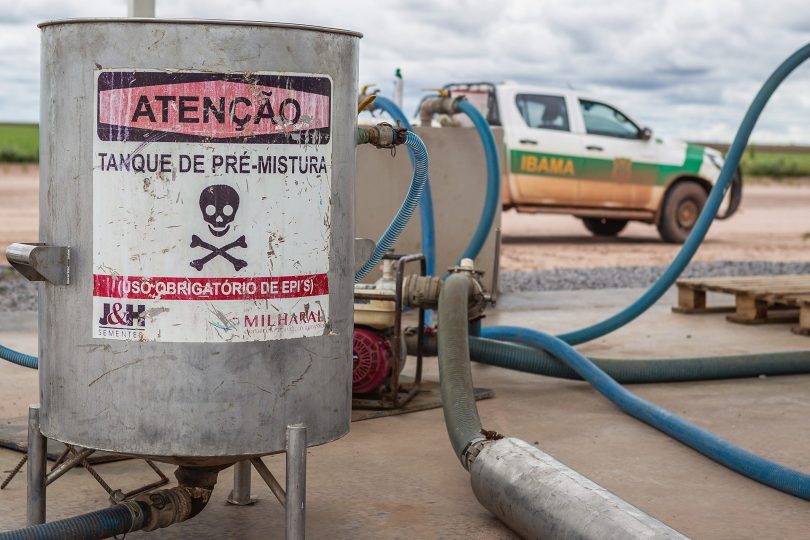In the race for cost-effective, high-yield cannabis crops, a trio of pesticides emerge: some good, some ugly, and others downright bad. In the spirit of the classic spaghetti Western, this two-part series looks at each, starting with the ugly and the bad (sorry, Blondie). Of course, the Environmental Protection Agency (EPA) does not authorize pesticide use for federally illegal plants, so we’re in outlaw territory. [1] To be clear, we do not recommend using the ugly or bad pesticides on this list.
The Ugly
These are harmful in many respects, but residue is tolerated in small amounts across several states due to registered use for certain food crops and, frankly, the real possibility that pesticides spread from nearby farms. [1]
- Pyrethroids (e.g., bifenthrin): pyrethroids are sunlight-stable synthetic versions of natural compounds found in chrysanthemum flowers (i.e., pyrethrins). They work by damaging central nervous system astrocytes in insects. [2] Commonly used to combat aphids (and lethal to beneficial insects, as well), bifenthrin is moderately hazardous to mammals. The EPA reports that it is “extremely toxic to fish and aquatic invertebrates.” The tolerance level for bifenthrin is 3 parts per million (ppm) in California for inhalable cannabis; in Oregon, the action level is 0.2 ppm. Wild west, indeed!
- Organophosphates (e.g., acephate): Organophosphates (OPs) are the most commonly used type of insecticide in the world and work by disrupting acetylcholinesterase (a neurological enzyme) in insects. Case studies on human OP poisoning report muscle twitching, labored breathing, nausea, diarrhea, exaggerated mood fluctuations, and coma. [3] The action levels for acephate, a moderately hazardous OP, is 0.4 ppm in Oregon; California specifies 0.1 ppm for inhalable cannabis and 5 ppm for other cannabis products. Remediation of OPs is a promising innovation.
The Bad
Banned or severely restricted in the United States due to being too awful—these are villains that poison the environment and public health and simply must not be tolerated.
- Carbofuran: the highly effective killer carbofuran massacred 1-2 million birds a year, including a range of endangered species, before it was banned by the EPA. Tragically, carbofuran remains widely used by illicit cannabis growers. The manufacturer’s data sheet hints at what you’re in for upon accidental exposure: “headache, light-headedness, weakness, abdominal cramps, nausea, excessive salivation, perspiration, blurred vision, tearing, pin-point pupils, blue skin color, convulsions, tremor and coma.” The Associated Press reports that a teaspoon is lethal for a full-grown, 300-lb bear.
- Methyl parathion: also known as “cotton poison,” methyl parathion is an extremely hazardous OP banned in most countries outside the United States; in the US (not California), it is still permitted for outdoor crops, especially cotton. In water and sunlight, methyl parathion breaks down into the even more toxic methyl paraoxon. When inhaled or ingested, methyl parathion floods the body’s organs; in the liver, it converts to methyl paraoxon. Both chemicals are highly neurotoxic, causing confusion, dizziness, loss of consciousness, and death. The same effects are observed in other animals. Unfortunately, methyl parathion has been detected at dangerous levels in medicinal and adult-use cannabis. [4]
But all is not lost—stay tuned for next week’s chapter to meet the good!
Main image: Wikimedia Commons, Ibama from Brasil (CC By 2.0)
References
- Seltenrich, N. “Into the Weeds: Regulating Pesticides in Cannabis.” Environmental Health Perspectives, vol.127, no.4, 2019. Impact Factor: 8.05; Times Cited: 4 (ResearchGate)
- Gargouri, B., et al.“Inflammatory and Cytotoxic Effects of Bifenthrin in Primary Microglia and Organotypic Hippocampal Slice C” J Neuroinflammation, vol. 15, no. 159, 2018, https://doi.org/10.1186/s12974-018-1198-1. Impact Factor: 5.193; Times Cited: 4 (ResearchGate)
- Namba, T., Nolte, C. T., Jackrel, J., & Grob, D. “Poisoning Due to Organophosphate Insecticides.” The American Journal of Medicine, 50, no. 4, 1971, pp. 475–492,doi:10.1016/0002-9343(71)90337-8. Impact Factor: 5.003; Times Cited: 85 (PubMed)
- Evoy, R., & Kincl, L. “Evaluation of Pesticides Found in Oregon Cannabis from 2016 to 2017” [ahead of print]. Annals of Work Exposures and Health. doi:10.1093/annweh/wxz075. Impact Factor: 1.713









